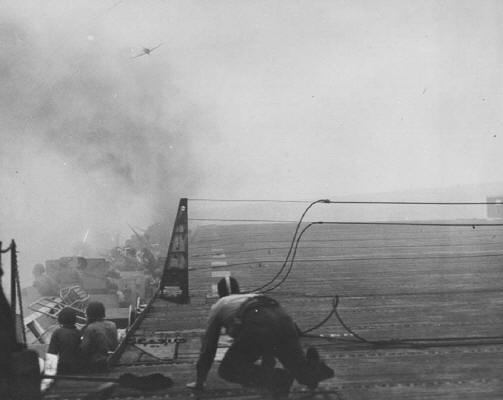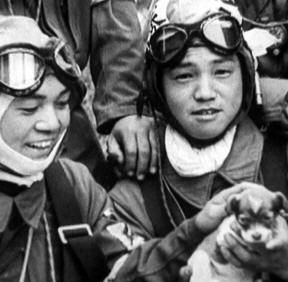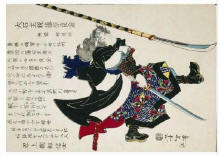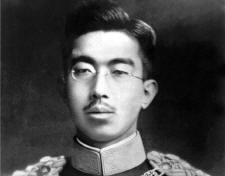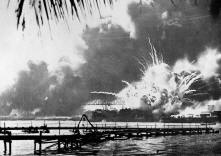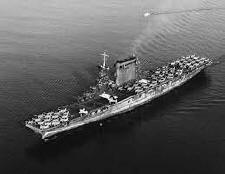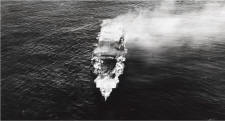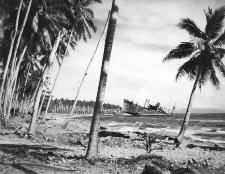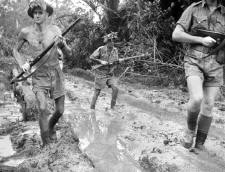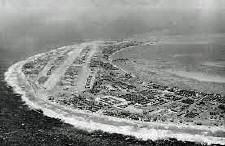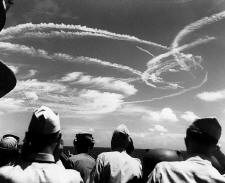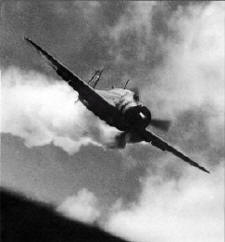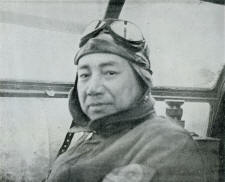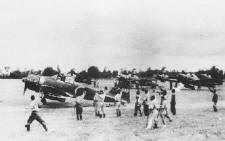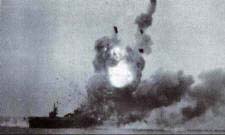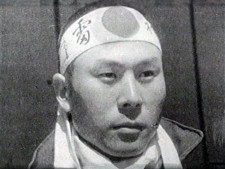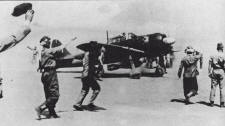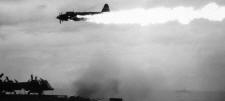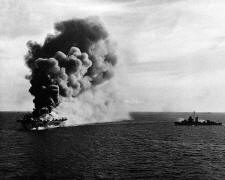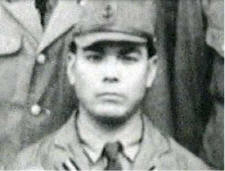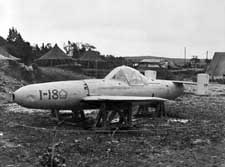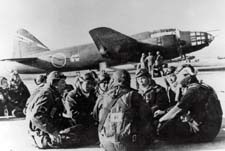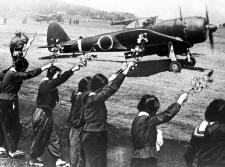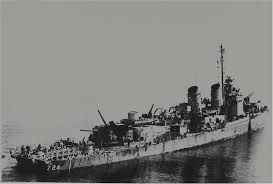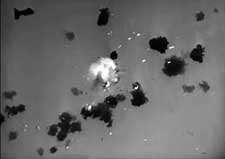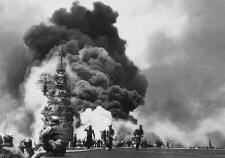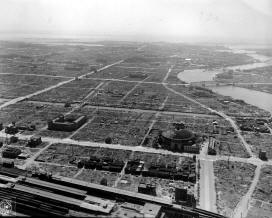|
|
Modeling ABC by Wilfried
Eck |
|
|
|
An A6M "Zero" of Air Group 201 on approach
to the escort carrier CVE-66 "White Plains" on 25.10.1944 |
|
|
Kamikaze |
| |
|
A matter of honor |
| |
|
|
Volunteers of the Yokaren Cadet Institute
for the mission with the MXY-7 Ohka |
|
|
|
|
A lot has been
written about Kamikaze. Right and not so right. But what is missing is an
answer to the question "Why kamikaze?" - The hopeless war situation answers
this only incompletely, because it leads to the further question "Why didn't
they surrender when victory was no longer possible?" - Also largely
unanswered is the background that led to the attack on Pearl Harbor, to the
war in the Pacific.
This article aims to show how everything came to understand Kamikaze. - The
true story.
|
Causes of the war:
|
|
The Japanese attack on Pearl
Harbor on December 7, 1941, can be understood as a reaction to the U.S.
diplomatic note of November 26, 1941, according to which an embargo would be
imposed if Japan did not withdraw from all occupied territories. In fact,
however, the attack on the U.S. naval base was only one component in the war
plan of General and Prime- later War Minister Hideki Tojo (pronounced To-cho).
In keeping with his long-held credo of "Asia for the Asians, prosperity for
all," the goal was to occupy the European colonies on the Asian mainland as
well as sources of raw materials in Manchuria and oil deposits in Indonesia.
To thwart American attempts at reconquest, it was necessary to secure the
region over a wide area - in the west as far as Burma (later India), in the
Pacific as far as the Gilbert and Marshall Islands, and in the south as far
as Australia.
The deeper reason for this
expansion policy lay far back. It began in the 16th century. Japan, religiously
firmly anchored in Zen Buddhism and Shintoism, initially paid no attention to
Christian missionary attempts, but then realized that Christian teachings were
in stark contradiction to its own. Japan, as a land of the sun created by the
sun goddess Amaterasu, embodied on earth by her son, the Tenno, already had a
god through him. Also, "love your enemies" was not compatible with bushi-do, the
Samurai code of honor, which had already become firmly established as part of
Japanese popular culture. Persecution of Christians and subsequent rigorous
isolation from the outside world were the result, in order to exclude
non-Japanese influences. The 1854 opening to commerce forced by Commodore
Matthew C. Perry through "gunboat diplomacy" was a shock that lingered long
afterward. Especially as European powers
successively established themselves in the form of colonies on the mainland and
in Southeast Asia. At some point, the Japanese feared, Japan would also be
occupied, its ancient culture displaced by the completely alien Western way of
life. The solution could only be military rearmament. Victory in the
Russo-Japanese War, February 8, 1904-September 5, 1905, seemed to confirm that
rearmament was the appropriate means to gain Japan the respect it deserved.
Moreover, as the victorious power, it had received the extensive, formerly
German colonies in the Pacific. As a result, Japan, since the tenno was averse
to any political activity, turned into a pure military dictatorship, in which
the state media and educational system ensured that the idealized samurai
virtues were internalized. Dissenters were dealt with by the "Kempetai" secret
state police. As a result of this indoctrination, unconditional obedience, death
for victory and the exclusion of surrender were natural virtues for a soldier as
the legitimate successor to a Samurai.
|
*
|
|
The actual background for the
Japanese way of warfare lies in the "Bushi do" (way of the warrior). The
medieval military government "Shogun" based its power on "Daimyos",
provincial princes, who in turn, however, strived for power. Wars with
neighbors were commonplace. Comparable to the early European knights, the
caste of the "Bushi" emerged. They were nobles or at least followers of such
a noble, who were obliged to serve their liege lord faithfully for life in
exchange for land and were called "Samurai". Since their fighting style
required strength and skill, constant training and an ascetic lifestyle were
prerequisites (in contrast to the rulers, who devoted themselves to their
intrigues in luxury). Because of their honorable and exemplary way of life,
Samurais enjoyed a high reputation among both the people and the rulers. With
the resulting self-confidence, surrender was unthinkable for a Samurai; the
disgrace would have fallen on his family as well. In a country where honor
was the highest good, the worst punishment. Likewise, no daimyo wanted
to employ a coward or loser. Since both would have deprived a Samurai of his
livelihood, there was only one alternative for him: victory or death.
Japanese legends are full of descriptions of bold and honorable behavior,
with the Samurai Kusunoki Masashige embodying the hero par excellence. Prior
to the Battle of Minotagawa in 1336, the Tenno had announced a battle plan,
but Masashige considered it a grave mistake that could only lead to defeat
and his death. Nevertheless, it was out of the question for Masashige to
contradict the Tenno. It came as he had foreseen. To atone for the ignominy
of defeat and restore their honor, Masashige and the few survivors committed
"seppuku" (vulgar: "harakiri"). - The high status of the family is still
reflected today in the fact that when the name is mentioned, the first name
follows the family name. |
| |
|
*
|
|
The Western designation of the Japanese head of state as emperor is
obvious, but it suggests a position of power that the Tenno - as he was
officially known - actually did not have. Considered a descendant of the
sun goddess Amaterasu since ancient times, he was a god and embodiment of
Japan. As the spiritual leader of Japan, as with all his predecessors, the
exercise of power and politics was not his concern. Until modern times,
the actual power lay de facto with a military government, the "Shogun".
But even after its abolition in 1868, Japan's post-World War I politics
were determined exclusively by the military. Tenno Hirohito functioned as
a mere symbolic figure. Participation in day-to-day business or even
issuing orders was neither in his interest nor expected of him. The fact
is that when Tenno Hirohito learned of the first self-sacrifice mission,
he welcomed the success but regretted the fate of the pilots. The fact
that he addressed his people by radio in August 1945 was unheard of at the
time. Never before had a Tenno spoken to the people, and never before had
a Tenno had to admit defeat.
In the course of the surrender negotiations, Hirohito had to renounce his
divinity, but he remained Tenno and head of state of Japan, because
General Douglas MacArthur had recognized that Japan needed a Tenno, if
reconstruction and democratization of Japan should succeed. This argues
against the Tenno's involvement in the war. |
*
The offensive:
In
the event of war, Japan was well equipped. Japan knew that in the vastness of
the Pacific, not battleships that could only shoot on sight, but aircraft
carriers (abbreviated in the following to "carriers") were the first choice when it came to
fighting an offensive war. With aircraft, power could be wielded over far
greater distances. There were ten carriers, equipped with the most modern aircraft of
the time and flown by the best pilots. The USA had eight carriers, but only four
in the Pacific fleet. Most of their aircraft were obsolete, their pilots
unprepared for war and therefore inexperienced. However, Admiral Isoroku
Yamamoto, who was charged with implementing General Tojo's plan, knew that the
U.S. would have to be presented with a fait accompli before it could unleash its
industrial potential. Sinking the American Pacific fleet at Pearl Harbor was
therefore indispensable.
|
|
|
Battleship "Arizona" explodes |
|
| December 7, 1941, 07.48
h: The war begins with the bombing of the US naval base Pearl Harbor on
Hawaii. Japan has deployed six aircraft carriers with a total of 353
aircraft (shielded by cruisers, destroyers and other ships). When the
second wave departs at 09:45 h, five of eight battleships have been sunk,
16 other ships disabled; in addition, 188 aircraft destroyed and 159
damaged, as well as damage to various installations. This compares with
own losses of 9 aircraft in the first wave and 20 in the second wave (65
killed and nine of the five small submarines). Since heavier losses are
to be feared in the planned third wave, Vice Admiral (VAdm.) Chuichi
Nagumo is retreating. |
| |
| The question of what the
USA knew about the impending attack is idle. With the forces at hand,
they would not have been an equal opponent. A naval battle would have
led to a debacle. |
| |
| What was celebrated in
Japan as a great victory was in reality a failure. The fact that they
attacked even though they knew that the two carriers had left was
perhaps due to the situation. The mistake with far-reaching consequences,
however, was to have taken care only of obsolete ships and not of the
fuel depots. Without oil and gasoline, the American Pacific fleet would
have been crippled for at least half a year. Japan could have completed
its campaign of conquest undisturbed. Just by the way: Except for the
total losses Arizona, Oklahoma and Utah, all other ships could be put
back into service after repair. |
|
The next day, Clark Field near Manila
was bombed, and on December 10, 1941, the first attack on the Philippines and
the occupation of the Marianas island of Guam in the central Pacific. Also in
the further one advanced fast. On the Asian mainland, Manchuria (now Manchukuo),
Korea and French Indochina (Vietnam) had been secured long before, and the
American, Australian, British and Dutch possessions fell within a short time
because they were only weakly manned and equipped. In the Pacific, it was
possible to use the former German colonial territories ranging from the Palau
Islands to the Marianas and the Gilbert and Marshall Islands, which had already
been awarded to Japan in 1919. Others could be taken quickly. In the spring of
1942, Greater Japan stretched from Burma to the Gilbert and Marshall Islands.
See overview map in "Milestones of the Pacific War"
and appendix "Maps and Photos" - links at the end of the page
*
Setbacks:
|
|
04-08 May 1942: During Operation "MO" -
capture of the Australian base Port Moresby on New Guinea - the Japanese
invasion fleet with three aircraft carriers meets the American fleet with
two carriers (both with the usual escort ships). However, they do not find each
other right away, and the value of long-range reconnaissance aircraft
becomes clear. In the end, Japan loses the light carrier Shoho, and the
fleet carrier Shokaku is damaged. On the American side, the fleet carrier
CV-2 Lexington, the destroyer Sims and the tanker Neosho are sunk, CV-5
Yorktown is damaged.
|
|
|
| Hiryu wreck
with explosion hole |
| |
|
04-07 June 1941: Battle of Midway: Admiral
Isoroku Yamamoto seeks a decisive battle between the two aircraft carrier
fleets with plan "AF" to continue his offensive plan. An attack on the U.S.
naval base of Midway - two islands of an atoll located halfway between the
U.S. and Japan - will, he calculates, bring the U.S. Pacific Fleet into
action and give him the opportunity to destroy it. Given the enemy's
resources, this is an undertaking that would be difficult to lose. All
flights launched from Midway prove completely ineffective. The first attack
by U.S. carrier aircraft also ends ineffectively but with heavy losses on
the part of the TBD torpedo bombers. By chance and bad luck, however, just
at the moment when three of VAdm. Nagumo's carriers have brought all
aircraft below deck, American SBD dive bombers find the fleet and are able
to bomb it unmolested. Burning gasoline and exploding bombs and torpedoes
spell the end for Akagi, Kaga, and Soryu; the Hiryu, farther away, later
suffers the same fate* but not before turning CV-5 Yorktown into a wreck (she
is sunk by Japanese torpedoes along with the destroyer Hammann on June 6).
Japan loses 223 aircraft as well as 2,181 ship's personnel.
|
|
|
* |
All Japanese carriers
were sunk not by American bombs but later by torpedoes from
Japanese destroyers. |
|
|
|
|
| Stranded
Japanese freighter "Kinugawa Maru" |
|
07 Aug. 1942 - 09 Feb. 1943: Gudalcanal,
Solomon Islands: A freshly established airfield by Japan on Guadalcanal in
the southern Solomon Islands, east of New Guinea, and the subsequent landing
of U.S. Marine Corps troops set the stage for a long series of land, sea,
and air battles in which Japan repeatedly attempts to retake Guadalcanal. A
central role is played by Rabaul, some 1,000 km to the north and
fortress-like, with its harbor and five airfields. From there, convoys of
ships set out to reinforce the decimated Japanese troops, and bombers and
fighter planes also took off from the more southerly island of Bougainville.
To no avail, because on Guadalcanal the U.S. Marines are supported by
contingents from the U.S. Army, Australia and New Zealand, and Marine Corps
pilots have learned not to engage in conventional air combat with the more
maneuverable and climbable A6M Zero-Sen*. They now always flew in pairs to
protect each other with a so-called "Thach weave."
| |
|
* |
Japanese naval aircraft of this time were optimized
for range by dispensing with armor and self sealing tanks which
added weight, while fighters in addition to range emphasized
maneuverability and rapid climb. The focus on lightness made
Japanese aircraft extremely vulnerable to gunfire, leading to
losses from just a few light hits, whilst by comparison, Allied
aircraft could absorb far more punishment and return from a
mission provided the engine continued to run. The fact that a
Japanese fighter pilot did not wear a parachute (until it was
ordered in 1943) because he could only imagine himself on the
offensive further contributed to the result that more pilots fell
than Japan could replace.
After evacuation of the remaining Japanese troops on February 9th,
1943, Guadalcanal could be considered secured, but it took until
late autumn 1943 to capture the northernmost island of
Bougainville. Rabaul, now strategically unimportant, could be left
to its own, further attacks (e.g. by the much-publicized Corsairs
of VF-17 and VMF-214) merely served to tie up Japanese forces
there that were needed elsewhere. |
|
|
*
Interim balance:
Japan never recovered from the losses
it had suffered so far. Objectively, the war was no longer winnable for Japan.
On the conquered islands, they were stranded and could only wait to see if an
attack occurred. Although it
still had aircraft carriers, it lacked ship personnel, aircraft, pilots and
mechanics. Therefore, in October 1943, the government launched a major
mobilization campaign, which resulted, among other things, in students being
drafted into the military. In the air forces of both branches, officer rank was
not a prerequisite for the pilot career, but the courses differed according to
the level of education. Uniform, however, was the principle that only those who
had shown a disproportionate amount of courage and stamina became graduates.
Daily caning and dangerous tests of courage were standard. If only a quarter
made it through, they thought that was still okay. On the negative side, however,
this rigorous selection process was reflected in low output, which is why
selection criteria were successively lowered, especially at the non-officer
schools, and training was shortened. Poorly trained pilots, however, inevitably
led to greater losses. The result was a downward spiral, in which one could
still pilot an aircraft at the end, but could no longer survive an air battle.
Another weak point was manufacturing.
Unlike in the U.S., where all production for civilian use was scaled back in
favor of military needs (car factories were now building airplanes, etc.) and
huge numbers were produced, Japanese factories were, by design, more artisanal,
with capacity in no way geared to large-scale production. Characteristics were
decentralization to smaller plants supplying ready-to-install parts and license
production (Nakajima built more A6M Zeros than Mitsubishi itself). Improvements
in the existing ones (if at all possible) led to deterioration in flight
performance. The need for new, improved types was recognized too late. What came
next, while competitive, was too late, too little, and increasingly flawed in
materials and manufacturing.
*
American Dual Strategy:
With the completion of the
joint venture recapture of the Solomons in the fall of 1943, the U.S. Army and
Navy could turn to their own tasks assigned by the Joint Chiefs of Staff on 24
March 1942. Two distinct and increasingly divergent theaters of war developed
(Burma/Myanmar was a British matter and is not relevant here).
- The US Army under General
Douglas MacArthur across New Guinea to the Philippines, thence north
with US Navy and Marine Corps.
|
- The US Navy with the
attached Marine Corps had assigned the Western Pacific up to Hokkaido
level, according to Admiral Nimitz's original plan across the Central
Pacific to the Philippines, from there together with the US Army to
Japan.
|
| See map "Milestones of the Pacific War" and "Maps
and Photos to Milestones of the Pacific war" - links at the bottom of this page. |
|
|
| Australian
soldiers at Milne Bay |
|
Army General Douglas MacArthur's plan to take one
Japanese position after another along the coast of New Guinea (see map "Milestones
of the Pacific War") was pejoratively called "leap frogging" in U.S. Navy
circles. The whole thing was made more difficult by the jungle, which in the end
cost more soldiers their lives on both sides than enemy bullets. Crucial was
naval surveillance, i.e. stopping Japanese supplies by heavily armed aircraft.
In the Philippines, on the other hand, Japanese rearguard action was to continue
until the end of the war, causing many civilian casualties.
|
|
|
|
|
|
|
CV-11 Intrepid with Air Group 6 |
|
| Like Admiral Yamamoto before
him, Admiral Nimitz was convinced that an offensive war could not be waged
by battleships that could only fire on sight, but that aircraft, especially
aircraft carriers*, were the first choice. Since Japanese carriers no longer
played a role after Midway, they could be used to attack any point in the
Pacific seemingly at random to decimate facilities and the enemy's aircraft.
Once a Japanese base was captured by the Marines, it was secured by Marine
Corps aircraft. Their range determined the size of their own territory
through maritime surveillance. In addition, long-range bombers of the US
Army Air Force could prepare the next operation. |
| * Usual complement: fleet
carriers (CV) about 90, light (CVL) and escort carriers (CVE) about 30
aircraft. |
| |
| Nimitz's strategy was
therefore based on gaining supply and repair bases for the fleet.
Japanese-occupied islands were only interesting if they had an airfield from
which one could threaten one's own operations or one could use it oneself
after occupation; everything else was location-bound and, since it was not
dangerous, could be left to its own devices. It would have been foolish to
try to jump from one island to the next (the much-cited "island hopping"),
because the enemy would have quickly adjusted to the order and taken
countermeasures. Incidentally, it would have taken a very, very long time to
try to capture thousands of islands and islets scattered seemingly at random
in the vast Pacific one by one in order to get to the Philippines in
accordance with the order. The Allies in the Solomon Islands had experienced
how time-consuming, material-intensive and personnel-intensive it was to
take a chain of islands one after the other. But there was no other way at
the time because aircraft carriers were scarce and the range of American
planes was less than that of the Japanese. Moreover, the Allied enterprise
was under the overall direction of General MacArthur. |
The most important stations
in brief:
|
|
|
|
Installations on Kwajalein Atoll |
|
|
| Contrails
over the Philippine Sea |
|
|
|
- 20-23 November 1943: 17 aircraft
carriers (6 CV, 5 CVL, 6 CVE) support the capture of Tarawa Atoll in the
Gilbert Islands, at the eastern end of Japanese dominion. Of importance is
only Betio Island (3.2 km x 0.8 km / 2 mi x 800 yds) with its airfield.
35,000 U.S. troops meet 3,636 Japanese and 1,200 conscripted Koreans. Due
to landing difficulties on the American side 1,009 dead, Japan loses 4,690
men (these and following figures according to Wikipedia).
|
- On Jan. 31, 1944, followed non-combat
capture of Majuro Atoll in the northwestern Marshall Islands, some 4,000
km from Pearl Harbor; from Jan. 31-Feb. 7, 1944, fighting for Kwajalein
Atoll with its lagoon of 839 sq. km (U.S. losses 348, Japanese 7. 800 (including
all personnel of Naval Air Group 281, who had joined the infantry after
losing all aircraft); Eniwetok followed on Feb. 21, 1944 (losses 37 to
about 800), like all previous ones with an airfield later used by itself.
The next target, the Marianas, is more than 1,000 km (560 nautical miles)
away.
|
- June 19 and 20, 1944: The Mariana
Islands of Saipan, Guam and Tinian, also inhabited by natives, are of
strategic importance. From them, the new long-range B-29 bombers are to
reach Japan. Japan attempts to prevent this in the Philippine Sea with its
last contingent of aircraft carriers; Shokaku, Taiho, and Hiyo are sunk by
torpedoes, and in an air battle that becomes known as the Turkey Shoot at
the Marianas, Japan loses more than 300 aircraft (numbers vary widely) and
their crews. This effectively spelled the end of Japanese naval air power.
|
- With the undefended Ulithi Atoll (548
km², 212 mi²), the base for all future operations falls into American
hands on September 23, 1944.
|
- October 1944: A large American convoy
of ships lies off Luzon in the Philippines. Japan's attempt to decisively
weaken the Americans with two fleets of battleships, cruisers and
destroyers fails, VAdm. Takeo Kurita withdraws after sinking the escort
carrier CVE-73 Gambier Bay for fear of the U.S. fleet carriers (in reality
lured north). The aircraft VAdm. Takijiro Onishi has left for defense* are
successively decimated in the air and on the ground.
|
| |
* The exact number of
aircraft available to VAdm. Onishi can no longer be determined. Published
numbers differ greatly. However, the exact number is also not important,
since the American aircraft carriers had far more aircraft in any case. |
|
|
|
|
*
"Kamikaze":
|
|
|
D4Y2 "Judy" in final dive |
|
People talk about Kamikaze missions
and Kamikaze pilots, but in Japan "Kamikaze" was understood differently and
was not used for such a kind of mission. "Kamikaze" was a historical-mythical
term deeply rooted in the Japanese consciousness, which goes back to two
typhoons that had prevented two Mongol invasion attempts - which Japan had
nothing to oppose - in the 13th century. This gave rise to the myth that when
Japan, as the land of the sun goddess, was in danger of being conquered by a
superior enemy power, a new great storm of the gods - "kamikaze" - would sweep
away the attacker. "Kamikaze" thus referred only to an unspecified rescue from
the greatest need. For the later organized operation, the Japanese Navy used
the term "Tokubetsu Kōgekita" (special attack), in short "Tokko Tai" or "Tokko",
in the army "Shimbu Tai".
| The word "suicide" seems
inappropriate to me in this context. A suicidal person wants to kill
himself. A Japanese pilot wanted to live and was only forced to do so by
circumstances beyond his control. - "Kamikaze" is
pronounced like "kameeh-kasse". |
Sacrificing oneself to achieve victory was nothing fundamentally new.* Already
during the war, special names for this had developed in the Japanese Navy. Just
as there were special names for the elaborate sword strokes of a samurai, an
exact designation of the type of mission was equally important for the military
communique and the family.
| "Jibaku": |
= |
Attack by means of
explosives, bomb or torpedo. |
| "Tai-atari": |
= |
Ramming attack by means of
aircraft, explosive boat or manned torpedo |
| "Senbotsu", "Senshi": |
= |
Honorably killed in battle
(comparable to the European "heroic death") |
| "Gyokusai": |
= |
Better death than shame. |
| "Jiketsu": |
= |
Honorable suicide in ritual
form to avoid disgrace ("sepuku", vulg: harakiri). |
|
The
slogan "Seven lives for mine" was already coined on Guadalcanal and referred to
a so-called "Banzai" attack (storming off in a closed front with insufficient
weapons). A soldier stationed on an island inevitably had only one alternative,
"victory or death," because he could not flee and was not allowed to surrender.
According to this, there were relatively few survivors, mostly Korean conscripts.
Even if one should be cautious with corresponding figures, a ratio of 10:1 to
the detriment of Japan is quite realistic for casualty figures.
After the fall of the Marianas in mid-1944, it was clear even to the ordinary
Japanese soldier that victory was no longer possible with the forces still
available. All that could be done was to try to inflict as much damage as
possible in order to create an anti-war sentiment in the U.S. that would make
the continuation of the war intolerable. In order to achieve an honorable
armistice with subsequent peace negotiations, it was necessary to continue
fighting, but by different means than before. Lieutenant Masakazu Ohta had
already had an idea for this in the spring of 1944, with which he approached the
Yokosuka aircraft factory (see "Jinrai" below).
| * There were also cases in
other nations where a pilot - knowing that he could not return - dived
into his target. |
*
|
|
|
VAdm. Takijiro Onishi |
|
|
|
Air Group 201, Oct. 21,1944 |
|
|
|
CVE-63 St. Lo explodes |
|
In
October 1944, the U.S. fleet was in Leyte Gulf off the Philippines. On the
Japanese side, this was seen as the last and decisive opportunity to destroy
them. In Operation Sho, two fleets of battleships, cruisers and destroyers
were to enter Leyte Gulf by different routes and achieve a major victory
there. In the process, the aircraft carriers of Task Force 38 were to be
lured away to the north by the carriers Zuikaku, Zuiho, Chiyoda and Chitose.
VAdm. Takijiro Onishi, commander of the air forces in the Philippines, was
given the task of eliminating the threat posed by the U.S. escort carrier (CVE)
aircraft still in Leyte Gulf. This had to be done quickly. Onishi's problem
in doing so, however, was the remaining aircraft inventory of Air Group 201.
Because the group included more than just fighters, published figures should
be taken with a grain of salt, but because the three CVE groups already
fielded some 360 aircraft, the exact number is insignificant. VAdm. Onishi
therefore went personally to Mabalacat, Luzon, on the evening of 19 October
1944 and pleaded for a self-sacrifice mission. A sure hit, he said, required
that an A6M Zero steers its underslung 250-kg bomb directly into the carrier
deck. Whether the executive officer, Col. Asa-ichi Tamai could organize such
a mission in place of the incapacitated commander. Tamai answered in the
affirmative and was able to inform Onishi at 3:00 a.m. that all non
commissioned officers (NCO) were ready to fly such a mission under the
leadership of Lieutenant Yukio Seki - 23 years old, a graduate of
the Naval Academy. The Zeros of Squadrons 305 and 306 had already been
equipped with mounts for an earlier planned skip-bombing mission.
A mission on October 21, 1944 (photo
left) had to be canceled due to bad weather. On the 25th the time had come.
Six A6M Zeros (units "Asahi" and "Kikusui") with four Zeros as escorts took
off from Davao on Mindoro; the unit "Shikishima" under Lieutenant Seki with
five self-sacrificial aircraft and four escort fighters followed some time
later from Mabalacat. The target was the escort carrier units "Taffy 1" and
- "3". The first ship to be hit was the "Santee" (CVE-29) at 07:40, and the
"Suwanee" (CVE-27) at 08:oo. Both had significant personnel losses from burn
injuries, but remained afloat. Seki's group hit "Taffy 3" and scored hits on
"Kitkun Bay" (CVE-71), "White Plains" (CVE-66), and "Fanshaw Bay" (CVE-70),
but these were relatively insignificant, as was later shown. "St. Lo"
(CVE-63), however, was different. A Zero, already trailing a plume of smoke,
according to legend piloted by Seki, first released its bomb and then struck
amidships at 11:35. Aircraft and ammunition caught fire in the hangar, and
the "St Lo" exploded a short time later in a spectacular cloud of fire (photo
left).
When the escort fighters*,
including the ace of aces, Hiroyoshi Nishizawa, brought home the news of
several aircraft carriers sunk, the spell was broken. A single brave pilot
was able to destroy an aircraft carrier along with its planes. Such a
mission was in keeping with best samurai tradition and made sense. A new
wind of the gods, kamikaze, was born. Volunteers came out in droves, some
signing their names in their own blood to lend weight to their message. A
poster with the Tenno's praise for the courage of the pilots (whose death he
had regretted) did the rest. The naval air force could therefore afford to
refuse married people and first-born sons. Nothing better illuminates the
situation than the story preserved in the "Yasukuni" shrine of Lieutenant
Fuji, an instructor whose wife drowned herself and their two children so
that he could fulfill his heart's desire to be allowed to fly such a mission.
However, in the Japanese Navy, at least in the early days, it was quite
natural and not at all dishonorable to return from a flight if one had not
found a target (e.g., because of bad weather over the fleet).
Those who were not assigned to
the first deployment of Group 201 perished in subsequent deployments from
Formosa (Taiwan).
|
*
The motives for
volunteering were many and varied. Nobody liked to die, but reasons for
reporting could be:
|
|
|
Traditional Hakimachi head band |
|
| - Fear of defeat,
removal of the Tenno, Americanization of Japan. |
| - Realization that there was no chance of survival in a conventional air
campaign. |
| - Opportunity to contribute to success by one's own death, to save Japan from
the disgrace of defeat. |
| - Dying a worthy samurai death - in the attack. |
| - Group dynamics (standing outside the group was unusual in Japan). |
| - Not to be seen as a coward. |
| - State media reports of atrocities American soldiers would commit on women
and children. |
| - Zen Buddhism. According to Japanese belief, a fallen warrior would enter
Yasukuni (comparable to the Germanic Valhalla), where he could enjoy all the
pleasures of life. |
| |
|
|
|
| A6M5
Zero with underslung bomb |
|
|
| P1Y1 "Ginga" unable
to hit the ship |
|
|
|
CVE-79 Ommaney Bay before sinking |
|
Volunteer
registration did not mean immediate assignment. One had to wait until one was
assigned. This waiting time was an opportunity for some to prepare themselves in
peace and quiet, to write letters and to take care of last things. Food, drink
and other pleasures were provided. For those, on the other hand, who in the
meantime had asked themselves why they had actually enlisted and those who had
only been detached, the waiting time dragged on as an agonizingly long ordeal
(in the words of one survivor: "It was like waiting for the electric chair"). No
matter what one's opinion was, one had to show attitude and no weakness even
during the last walk. The order to go into action was therefore experienced as a
kind of salvation. What moved the individual can only be gleaned from the
surviving farewell letters to a very limited extent. They were subject to
censorship and had to be patriotic.
It is not known
whether the launch of the first "Tokko" machines of Group 201 was associated
with a ceremony. What is certain, however, is a ritualized procedure during
later missions, combined with a common song, gladly that of the soon falling
cherry blossoms. After lining up, a senior officer gave a motivational speech in
honor of the deployment, then everyone received their "hakimachi" headband with
the rising sun and a bowl of sake. Walking to the plane, one showed poise, what
one felt was a private matter. Waving to the departing pilots one last time was
a matter of course. After an appropriate waiting period due to possible
returnees as a result of engine damage, the departed were officially declared
dead*. The parents received a small wooden box in which their loved one had
previously placed a lock of hair, parts of fingernails or other objects. The
final step was posthumous promotion by two levels.
| * |
If a pilot survived because he
had to make an emergency landing on a small island en route due to engine
failure or for other reasons, he had the problem after the war that he
officially no longer existed. He had to get himself another name. |
Amazingly, it
was neither the impact nor the bomb that could sink a ship, but the fuel set on
fire. The hole created by the impact was relatively insignificant because the
wings were torn off. The bomb carried had a greater effect in comparison.
Especially if it was triggered before impact and caused a second hole. In the
first case, the ship usually remained afloat; in the second, it could possibly
be enough to sink smaller ships. The real danger, however, was the fuel that
caught fire, which was controllable in itself but could have a devastating
effect on aircraft carriers. In the hangar below the flight deck were parked
aircraft fully loaded on ammunition and refueled, with bombs and torpedoes
stored on the walls. If these exploded, the fate of a lightly built escort
carrier was sealed. So were the escort carriers CVE-79 Ommaney Bay on 4 January
1945 and CVE-75 "Bismarck Sea" on 21 February 1945, but they were the last to be
lost to enemy action. Subsequent fleet carriers were only more or less damaged.
Such attacks were ineffective on the British aircraft carriers, which had
armored decks ("Sailors man your brooms").
That an
experienced pilot could destroy an aircraft carrier with two bombs from a
Yokusuka D4Y "Judy" dive bomber even without self-sacrifice was demonstrated in
the case of the CVL-23 "Princeton" on 24.10.1044.
|
*
"Jinrai Butai, the
Thunder Gods:
|
|
|
Masakazu
Ohta |
|
|
| MXY-7
Ohka, found at Yontan |
|
|
| G4M2e bomber with Ohka and crews |
|
Lieutenant "Masakazu Ohta" (also known as "Shoiji Ota"), a transport aircraft
pilot, was not the only one to realize early on that the Naval Air Force was no
longer capable of providing decisive countermeasures to the ever-growing number
of U.S. aircraft carriers. But it was he who approached the University of
Tokyo's Aeronautics Experimental Laboratory with a proposal to build a
solid-fuel rocket-propelled, explosives-laden flying machine that could be
manually piloted into a ship. There they saw potential, drew up rough plans, and
passed them on to the Yokosuka Works Experimental Laboratory. The result was the
MXY-7 "Ohka," outwardly like a torpedo with small wings and tail. Loaded with
1.2 tons of explosives in the nose, it was to be brought close to the target
while suspended under a bomber. After disengaging initially in glide, on
approaching the target the rocket engine would be ignited and the aircraft
accelerated in a dive to about 1,000 mph. This, it was assumed, should be enough
to sink any aircraft carrier. A separate unit, Group 711, "Jinrai Butai," was
formed, equipped with G4M2c "Issiki Rikko" (Allied code name "Betty) for
transport and A6M5 Zero (all. "Zero") fighters for escort.
The
Ohka was staffed exclusively by volunteers, graduates of the Yokaren Cadet
School, 15-16 years old but already with pilot training (nothing unusual in
Japan), and those from high and middle schools. Propaganda
immediately took to them, postulating that this was the new "divine wind" that
would save Japan. Whoever brought an Ohka to the finish line would become a god
himself. Accordingly, the young pilots enjoyed the highest honors, every wish (even
cigarettes to young people) was fulfilled.
The
MXY-7 was ready in September 1944, but this did not mean that it could be used
immediately. First, the future crews had to be familiarized with the flight
characteristics at Konoike airfield (sand was installed instead of the bomb).
While the "Yokaren" teenagers had completed pilot training (nothing unusual in
the Japanese Navy), the other volunteers had to be trained first. The steering
characteristics of the "Ohka" were judged to be good, but landing on the skid
attached for this purpose was problematic. The MXY-7 was not a glider because of
its small wings. The angle of approach had to be precisely maintained and there
was only one attempt. Mistakes could mean death.
A
further and considerable delay occurred when on 27 October 1944 the new aircraft
carrier "Shinano" was sunk by the U.S. submarine "Archerfish" and a few weeks
later the carrier Unryu. 138 Ohkas were lost as a result. It was not until March
1945 that a mission was again considered.
On
March 21, the timing appeared opportune; a ship aggregation 200 km off Kyushu
had been reported. The carriers would have no aircraft on board. For VAdm.
Matome Ugaki this was a welcome opportunity to lead the first attack. The
subsequent announcement that there were aircraft on board after all did not
change his mind. Under a drum roll and a replica of the traditional flag of
Mashige Kusonoki from 1336, 3 commando- and 15 G4M2e "Issiki Rikko" bombers loaded
with "Ohkas", accompanied by ten remaining
A6M5 Zeros of "Jinrai Butai" (Air Group 711) as escorts took off from
Kanoya airfield at 11.35, but
were soon intercepted by F6F-5 Hellcat of US carriers CV-12 "Hornet" and CVL-24
"Belleau Wood". In 20 minutes it was all over. All the bombers and some escort
fighters had been shot down. What followed later was hardly any better. Only six
insignificant ships were damaged, the only real success was the sinking of the
destroyer DD-733 "Mannert L. Abele" on April 12, 1945 by Saburo Doha, an introverted student
teacher. The dead were 375 crew members of the G4M2e carrier aircraft and 55 Ohka
pilots. The remaining Ohka volunteers were assigned to conventional "Tokko"
missions.
Masakazu Ohta changed his name after the war out of shame at the failure of his
idea and the death of so many. Only shortly before his death did he reveal to
his son who he really was.
|
*
Final battle for
Okinawa, March 26 until July 2, 1945:
|
|
| Farewell to Ki-43 III ko
by Chiran girls |
|
|
|
DD-724 Laffey after
the attack |
|
|
|
Premature end of an attack |
|
Okinawa, an island of about 100,00
inhabitants located 563 km (304 nm) south of Kyushu, formed the last stop before
an invasion of Japan. The Japanese Army - traditional rival of the Navy -, had
meanwhile changed its opinion that "Tokko" was a waste of men and material, and
now participated with its own units, called "Shimbu". Formations of 300 or more
aircraft formed from the Navy and Army, called "Kikusui," consisting of "kamikazes"
and escort fighters, were intended to overwhelm American defenses and thus allow
more aircraft to get through. As for aircraft types (Army planes often with
motivational emblems on the vertical stabilizer), anything that seemed suitable
was used, fighters, bombers, torpedo planes, etc... However, it is uncertain
whether Tachikava Ki-9 Spruce training biplanes at Kikuchi Airfield, Honshu that
were equipped with a gasoline barrel on the rear seat were actually used.
Because of their design, however, they would have had a good chance of getting
through, since they could hardly be detected by ship radar.
As far as the need for personnel was
concerned, voluntariness was now no longer the decisive factor on either side.
Everyone knew that other options were out of the question. It was enough to
convert a regular squadron into a "Tokko" or "Shimbu" unit, or to make the
graduating class of a course into one. In addition, however, there were still
genuine volunteers from the high schools and middle schools. They were poorly
trained, but they filled the ranks, which was quite calculated, because they,
too, kept the American defenses busy.
The airfield of the small town of
Chiran in the south of Kyshu became the central departure point. For the
overnight stay before the mission flight, flat wooden barracks had been erected
on the outskirts between trees, in which rows of futons stood, schoolgirls acted
as chambermaids. The photo of them waving goodbye was not posed. They knew what
kind of flight it would be. Quite a few of the young pilots wore little dolls on
their belts. They had received them from their host parents, who adored and
pitied them in equal measure, with best wishes for their flight. The last
letters had to be patriotic, as usual, and were subject to censorship.
As for the mission flight itself, the
now precarious fuel shortage prohibited complete refueling (the population was
called upon to collect pine roots, the sap of which was supplied in liquified
form). Each flight was thus a one-way, low-scoring flight. In any case, they
first had to pass the widely staggered line of American early warning destroyers
(which in their turn became targets of attack, like the legendary DD-724 "Laffey",
14 others were sunk). Then they met the fighter planes of the "Combat Air Patrol"
of the carrier fleet. Those that survived this faced a collected barrage of
artillery fire on approach to a carrier. The best chance for a hit was to
approach lengthwise of the carrier, since there were few guns at the stern, and
then hit the deck as steeply as possible. Those who thought they could avoid the
planes and, to some extent, the artillery by flying low would end up with only
the ship's side in front of them and could do little damage there. Too shallow
an approach to the deck also reduced the hit effect. As for planes that crashed vertically into the sea
from altitude without apparent cause, either the pilot had already been killed
by shrapnel or - as in the case of the A6M Zero - he was no longer able to steer
the plane because of too high a rate of descent.
Before impact, one did not call out "Banzai!"
at all. It was more common to say "Mother" or the name of another loved one. |
|
|
|
**
Kamikaze attacks in result:
|
|
With the capture of Okinawa on July
2, 1945 and the withdrawal of the American fleet, the "Kamikaze" attacks also
ended. The escort carriers CV-63 "St. Lo", CVE-79 "Ommaney Bay" and CVE-75
"Bismarck Sea" were sunk. Of the fleet carriers, each had been hit at least once
(CV-11 "Intrepid" even five times), but the respective damage was limited. CV-3
"Saratoga", CV-13 "Franklin" and CV-17 "Bunker Hill", on the other hand,
suffered not only high personnel losses, but also such extensive damage that
they were put out of action for the rest of the war. The remaining ships were
mostly destroyers of the outpost chain and smaller ones.
On the American side, the losses of
war equipment had virtually no impact. There was plenty. What was worrying,
however, was the increasing war neuroses as an indirect side effect of this kind
of Japanese warfare. Since surrender could no longer be expected, the worst had
to be expected if Japan was invaded. The use of the atomic bomb seemed
inevitable.
How many "kamikaze" missions were
flown cannot be determined with certainty, but a figure of around 2,000 seems
realistic. Perhaps the goal, the cease-fire sought by the Tenno and insightful
politicians, would indeed have been achieved. But unfortunately, the Soviet
Union had been used as a mediator. However, as the declaration of war in
violation of the neutrality pact shortly after the dropping of the first atom
bomb proves, they had the opposite in mind.
In numbers: "Kamikaze" attacks sank 36 ships
and damaged 368. Killed and injured US
soldiers nearly 10,000
|
**
Last
days and the end:
|
|
| Tokyo
in ashes, 10 March 1945 |
|
-
August 6, 1945, First atomic bomb dropped
on Hiroshima.
-
August 8, 1945, Stalin declares war on
Japan.
-
August 9, 1945, Second atomic bomb dropped
on Nagasaki.
-
August 15, 1945, Tenno Hirohito personally
announces Japan's surrender.
-
September 2, 1945, Official surrender
aboard the battleship Missouri in Tokyo Bay.
After the war ended, no one wanted to
hear anything about Tokko/Shimbu. The defeat and the knowledge of
the senseless death of many young men hurt too much. In addition, not only
Hiroshima and Nagasaki, but all industrial cities had suffered devastating
attacks (Tokyo about 100,000 deaths from an incendiary bombing
on March 09/10, 1945, see left). Those who had been prevented from flying Tokko or Shimbu by
the end of the war, or who had had to abandon the flight because of engine
failure or other reasons, remained stubbornly silent. The disappointment that
everything had been in vain and the shame of having remained alive were too
deep-seated. - But there were also people who rejoiced: Mothers.
VAdm. Matome Ugaki, who refused to
accept the surrender, was killed in an unsuccessful "Tokko" attempt. VAdm.
Takijiro Onishi committed "seppuku" (vulg.: "hara-kiri") on August 16, 1945.
General Hideki Tojo was found guilty of war crimes by an Allied military
tribunal and hanged on December 23, 1948. Admiral Isoroku Yamamoto had already
been shot down on April 18, 1943, while flying near Bougainville.
|
***
Literature:
As for literature in general, the
difficulty in writing this page was to separate fact from fiction. Especially
figures sometimes differ considerably. I have refrained from links in the text,
because they are detrimental to readability; if you are interested, it is
sufficient to enter the word - possibly with the addition "WW II" - as a search
term.
To list all the print literature
that I have read over decades and later checked for correctness would take up
too much space and would also make little sense, since most of it is no longer
available these days. Here are only the most important ones:
| M.G. Sheftall |
Blossoms in the Wind, Human
legacies of the Kamikaze |
| Ikuhiko Hata und Yashuho Izawa |
Japanese Fighter Aces and
Fighter units in World War II |
| Saburo Sakai, Martin Caidin,
Fred Saito |
Samurai! |
| Bernhard Millot |
Kamikaze (Deutsch) |
| George Gay |
Sole Survivor |
| Robert Sherrod |
History of Marine Corps Aviation
in World War II |
| James and William Belote |
Titans of the seas |
| William T.Y'Blood |
The little Giants |
| Geoff Thomas |
US Navy Carrier Aircraft Colors
(and operations) |
| Anthony F. Zollo, Sr. |
USS Intrepid |
| Stefan Terzibaschitsch |
Flugzeugträger der U.S. Navy
(Deutsch) |
Interesting websites:
All photos US National Archives or
other public sources. - Text Copyright Wilfried Eck
